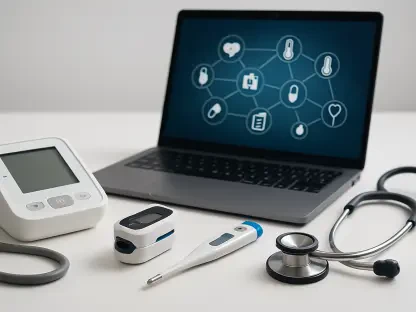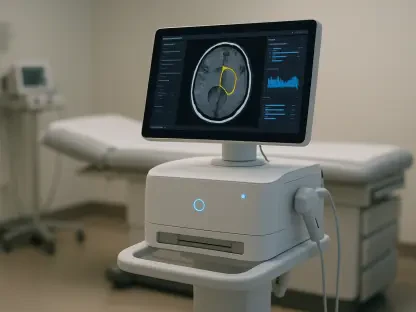The global laboratory automation market is witnessing an extraordinary surge, propelled by the critical need for efficiency, precision, and scalability in healthcare and scientific research sectors. This vibrant industry is fundamentally reshaping laboratory operations worldwide through the adoption of automated systems, sophisticated software, and groundbreaking technologies such as artificial intelligence (AI) and machine learning (ML). With a projected compound annual growth rate (CAGR) of approximately 7% through 2030, the market is on track for significant expansion, reflecting a growing appetite for solutions that reduce human error, streamline repetitive tasks, and optimize complex workflows. Laboratories today face mounting pressure to manage increasing workloads, whether in high-throughput testing, drug discovery, or clinical diagnostics. Automation stands as a transformative force, enabling professionals to shift their focus from mundane processes to innovation and problem-solving, thus redefining the future of lab efficiency and accuracy.
Forces Fueling Market Momentum
The rapid growth of the laboratory automation market is largely driven by the seamless integration of AI and ML into everyday lab processes, pushing the boundaries of what automation can achieve. These advanced technologies do more than just mechanize routine tasks; they facilitate sophisticated data analysis, predictive diagnostics, and workflow enhancements that were previously unimaginable. By minimizing manual intervention, AI and ML help tackle pressing challenges such as labor shortages and budget constraints, delivering quicker turnaround times and more effective resource allocation. This technological leap is particularly crucial in high-demand areas like clinical diagnostics and pharmaceutical research, where precision and speed are paramount. As labs increasingly adopt these tools, the ripple effect is felt across the industry, setting new standards for operational excellence and paving the way for smarter, data-driven decision-making that enhances overall productivity.
Another significant catalyst for market expansion is the substantial rise in healthcare spending and research and development (R&D) investments across the globe. As healthcare systems prioritize innovation to meet evolving demands, laboratories in biopharma, clinical diagnostics, and academic research are turning to automation to handle escalating needs for rapid testing and groundbreaking drug development. This trend is especially pronounced in sectors requiring large-scale, high-throughput operations, where automation ensures consistency and scalability. The push for improved patient outcomes and faster therapeutic advancements has made automation an indispensable tool, enabling labs to keep pace with growing workloads while maintaining stringent quality standards. This financial and strategic focus on R&D underscores a broader commitment to leveraging technology to address some of the most pressing challenges in modern healthcare, positioning automation as a cornerstone of future progress.
Innovations Shaping the Industry Landscape
At the core of the laboratory automation boom are cutting-edge technological advancements that continue to redefine lab capabilities and efficiency. Recent product launches, such as scalable sample preparation instruments and integrated diagnostic analyzers, demonstrate the industry’s dedication to addressing diverse laboratory needs with precision and adaptability. These innovations are designed to streamline complex workflows, reduce downtime, and enhance the accuracy of results, making them invaluable across various scientific applications. Strategic partnerships among technology providers further amplify these developments, fostering solutions that integrate seamlessly into existing systems. This collaborative spirit ensures that automation tools are not only advanced but also practical, meeting the real-world demands of labs ranging from small-scale facilities to large research hubs, and driving a continuous cycle of improvement.
The competitive landscape of this market is equally dynamic, characterized by a blend of established industry leaders and innovative newcomers pushing the envelope of automation technology. Companies like Thermo Fisher Scientific and Siemens Healthineers maintain a strong presence with their comprehensive portfolios, while emerging players introduce novel solutions that emphasize flexibility and scalability. This mix creates a fertile ground for innovation, where competition fuels the development of next-generation tools tailored to specific lab challenges. The ongoing introduction of new products and collaborative efforts reflects a market that thrives on adaptability, ensuring that automation solutions evolve in step with the changing needs of healthcare and research sectors. Such a vibrant ecosystem not only drives technological progress but also ensures that labs have access to a wide array of options to enhance their operational efficiency.
Barriers to Broader Market Penetration
Despite the promising outlook, the laboratory automation market faces notable obstacles that could hinder its widespread adoption across all sectors. A significant challenge is the skill gap in operating advanced automation systems, compounded by a persistent shortage of trained professionals capable of managing these technologies. This issue is particularly acute for smaller laboratories, which often lack the resources to invest in comprehensive training programs. Without skilled personnel, the full potential of automation remains untapped, limiting its impact on operational efficiency and innovation. Addressing this barrier requires a concerted effort to develop accessible education initiatives and certification programs that equip lab staff with the necessary expertise, ensuring that the benefits of automation are not confined to well-funded, large-scale facilities but are accessible to a broader range of institutions.
Another hurdle is the reluctance of small and medium-sized laboratories (SMLs) to embrace automation, often due to the high initial costs and a lack of clear evidence demonstrating long-term cost-effectiveness. For these facilities, the financial risk of investing in sophisticated systems can outweigh the perceived benefits, creating a disparity in market penetration compared to larger labs with greater budgets. This hesitation slows the overall adoption rate and highlights the need for affordable, scalable solutions that cater to the unique constraints of SMLs. Industry stakeholders must focus on developing cost-effective automation tools and providing robust data on return on investment to build confidence among smaller players. Bridging this gap is essential to democratizing access to automation, ensuring that labs of all sizes can leverage its transformative power to enhance productivity and accuracy in their operations.
Geographic Trends and Emerging Opportunities
Regionally, North America and Europe continue to lead the laboratory automation market, underpinned by their advanced healthcare infrastructure and significant investments in R&D. These regions benefit from a strong culture of technological adoption, with laboratories prioritizing efficiency and innovation to meet stringent regulatory standards and patient expectations. The presence of leading automation providers and research institutions further solidifies their dominance, ensuring sustained growth and market leadership. As these areas continue to push for advancements in lab technology, they set benchmarks for best practices, influencing global standards and encouraging other regions to follow suit. This established foundation positions North America and Europe as critical hubs for the development and deployment of cutting-edge automation solutions.
Meanwhile, the Asia Pacific region is rapidly emerging as a powerhouse of growth, driven by the swift modernization of healthcare systems in countries such as China, India, and Japan. As these nations invest heavily in upgrading laboratory capabilities to support expanding populations and rising healthcare demands, the appetite for automation solutions is surging. This trend represents a significant opportunity for market players to tap into a burgeoning customer base eager for technologies that enhance testing capacity and diagnostic precision. The unique challenges of the region, including diverse healthcare needs and varying economic conditions, also spur innovation in creating tailored, cost-effective automation tools. With such momentum, Asia Pacific is poised to become a pivotal contributor to the global market’s expansion, reshaping the competitive landscape and driving widespread adoption of automated systems in the coming years.
Reflecting on Transformative Progress
Looking back, the journey of the laboratory automation market reveals a landscape shaped by relentless innovation and an unwavering commitment to addressing critical healthcare challenges. The steady growth trajectory, marked by a 7% CAGR through 2030, underscores how automation has become a vital pillar in enhancing lab efficiency and precision over time. Challenges like skill shortages and adoption hesitancy among smaller labs have been met with targeted efforts to develop training and affordable solutions, reflecting the industry’s adaptability. Technological strides, from AI-driven analytics to scalable instruments, have transformed routine processes, while regional disparities highlight both established dominance and emerging potential. Moving forward, stakeholders should prioritize collaborative initiatives to bridge remaining gaps, ensuring automation’s benefits reach every corner of the scientific community. Investing in education and scalable technologies will be key to sustaining this momentum, offering a roadmap for labs worldwide to navigate future demands with confidence.









